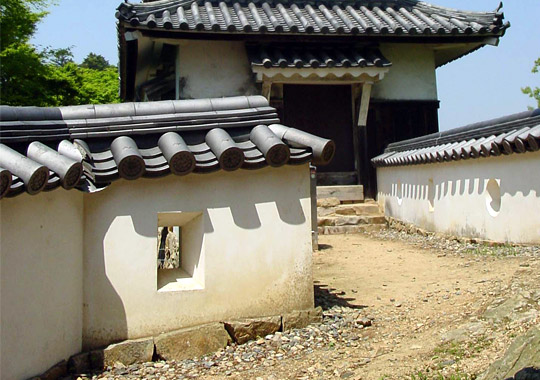|
||
 |
||

Bitchuu Matsuyamajou 備中松山城 (Okayama)
(C)2001 Japanese Architecture and Art Net Users System. No reproduction or republication without written permission.
掲載のテキスト・写真・イラストなど、全てのコンテンツの無断複製・転載を禁じます。
|
||||||
| dobei 土塀 | ||||||
| KEY WORD : architecture / general terms | ||||||
| Also read tsuchibei. Also called *tsuiji 築地. An earthen wall, or parapet, that usually has a plastered and tiled roof that stands atop a stone-faced embankment. In the middle ages, slat board fences *itabei 板塀, adequately served as barricades. After the introduction of firearms, earthen walls gained favor, notably earthen walls with surfaces coated with hard plaster. A tiled gabled roof gave walls or parapets, towers *yagura 櫓, and the keep *tenshu 天守, a greatly enhanced aesthetic appearance and became the chief characteristic of early modern castles. The term for clay walls *neribei 練塀, was used when clay was the primary building material instead of dirt. | ||||||
 Bitchuu Matsuyamajou 備中松山城 (Okayama) |
||||||
| REFERENCES: | ||||||
| *hei 塀 | ||||||
| EXTERNAL LINKS: | ||||||
| NOTES: | ||||||
(C)2001 Japanese Architecture and Art Net Users System. No reproduction or republication without written permission. 掲載のテキスト・写真・イラストなど、全てのコンテンツの無断複製・転載を禁じます。 |
||||||